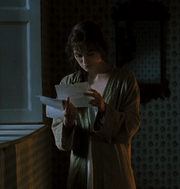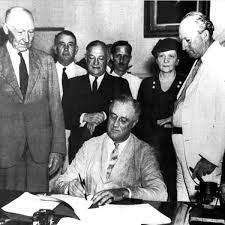In 1964, Marshall McLuhan, a Canadian communication theorist authored a study entitled Understanding Media: The Extension of Man. In this profoundly successful, pioneering study of media theory, McLuhan argues that the infrastructure and mechanics of media, rather than the content it carries, should be the true focus of study. In the opening paragraph, McLuhan declares the following statement:
In a culture like ours, long accustomed to splitting and dividing all things as a means of control, it is sometimes a bit of a shock to be reminded that, in operational and practical fact, the medium is the message. This is only to say that the personal and social consequences of any medium – that is, of any extension of ourselves – result from the new scale that is introduced into our affairs by each extension of ourselves, or by any new technology. (McLuhan, 1964)
When thinking about the current state of the Contemporary American Memoir genre, McLuhan’s assertion that content is intimately codependent upon form holds particular relevance.
At the genesis of the genre, protestant spiritual testimonies and slave narratives constituted the majority of memoirs, and successful memoirs typically conveyed factual, uplifting stories of individuals triumphing over seemingly impossible odds. In a New York Times Article entitled “These Literary Memories Take a Different Tack,” Megan O’Grady explains that originally, memoirs featured “an element of educating while entertaining and a moral argument” (O’Grady, 2021). The genre norm became an expectation that memoirs would be glass-half-full, hopeful narratives of human triumph with clean conclusions, which quickly became a limiting and unrealistic expectation for authors. Minority authors were faced with the pressure to offer representative experiences of the entirety of their race (or gender), and white America was often horrified by the true reality of minority experiences, making memoirs unpalatable. By the 1980s, it was clear that the genre was not fulfilling its function – memoirs either had to sacrifice honesty in the name of sales and readability, or sacrifice palatability in the name of honesty. The medium was failing the message.
Thi Bui, a contemporary memoirist, experienced dissatisfaction with memoir storytelling conventions, which she discussed in an interview with Kiese Laymon. When asked to pinpoint the most difficult part of writing her memoir, The Best We Could Do, Bui with a pleased look in her eyes, answered: “I had to learn how to take up space.” In telling her own story, one that does not conclude tied with a pretty bow signaling triumph, the established conventions of the memoir genre appeared futile. In order to convey her message, then, she needed to change the medium.
In contemporary American memoirs, minority authors continually push against the boundaries of the genre – they are all, like Bui, attempting to find ways to take up space. In order to tell more nuanced stories of modern identity and experiences, contemporary memoirists push back against the convention of every memoir requiring a triumphant ending, and they do so through taking risks in the form of their text. Due to these innovative authors, the memoir genre has grown to allow room for humor, typographic creativity, graphic novels, a blurring of fact and fiction, intertextuality, and circular narratives – and the innovations in medium allowed room for new messages. Modern memoirists continually prove that when the stories become more complicated, so too must the form. Contemporary American memoirs are risk taking in form precisely because authors required new tools if they hoped to tell new stories.
While memoirs historically remained fairly serious, melancholy, and highly individualized, contemporary memoirs take the risk of incorporating humor into their narratives, allowing space for human connection and easing both the writing process and reading of traumatic stories. When used intentionally, humor functions within literature to maintain the reader’s attention, to broach uncomfortable topics more comfortably, and to connect the reader to the very human authorial persona behind the words.
In her graphic memoir Secret to Superhuman Strength, Allison Bechdel presents her narrative in the form of comic strips, explicitly relying on a form affiliated with humor. Throughout the illustration, Bechdel employs self-deprecating asides. For example, next to a comic of her sporting reading glasses, Bechdel jokes that the glasses “are not so much for seeing as not being seen” (Bechdel 69). The asides, which appear throughout the entirety of the memoir, channel a sarcastic, self-deprecating voice operating just below the surface, bubbling up occasionally to poke fun at Bechdel’s own naivete. In her search for superhuman strength, Bechdel took many wrong turns, and the humor employed within the text allows the reader to laugh alongside Bechdel, rather than judge her missteps. The humor, as employed in Secret to Superhuman Strength, makes space for self compassion within narratives of maturation. It calls the reader to remember Bechdel’s innate humanity as well as the reader’s own, therefore forging a connection between them.
Natasha Trethewey similarly employs humor throughout her novel, Memorial Drive, but in her memoir, it functions as much needed emotional relief, for both the reader and writer, during the midst of conveying stories of severe trauma. Due to the structure of the narrative, the reader knows from the first page that Memorial Drive will end in the murder of Trethewey’s mother, and yet, the reader is offered continual opportunities to laugh, feel joy, and celebrate in spite of this reality. In her aforementioned interview with Kiese Laymon, Trethewey was asked to explain her use of the comic in the architecture of her memoir. Trethewey explained that when writing Memorial Drive, incorporating humor was not so much of an intentional choice, but was rather a necessary tool for surviving the writing process. In detailing the greatest trauma of her life, a task most human beings would never voluntarily undertake, Trethewey used humor as an emotional coping mechanism, offering herself and her readers respite from the heavy narrative. Trethewey, like Bechdel, found a new tool in order to tell new stories.
Additionally, contemporary memoirs take form risks through utilizing typographic creativity in novel ways. Due to her background and training as a poet, Natasha Trethewey’s prose exhibits close attention to typographic detail. In poetry, an author has many tools at her disposal – line breaks, italics, white space, imagery, allusion, the list could go on. In prose, the lyricism of syntax is the only tool, and Trethewey utilizes it to its full advantage, in ways few authors do. In the second chapter of Memorial Drive, Trethewey explains that she willed herself to forget as much as she could of the years from 1973 (when she moved to Mississippi) and 1985 (when her mother was killed). “I chose to mark the calendar year just after my mother and I left Mississippi as ending, and the moment of loss – her death – as beginning,” writes Trethewey, showcasing her emphasis on typographic choices (51). Italics inherently call the reader to slow down, and in this sentence, the italics function to highlight the irony presented within the sentence. When her and her mother move cities, Trethewey views it as an ending, whereas the larger culture would see this as a beginning. When her mother dies, though, she views it as a beginning, despite it being a definitive ending to her mother’s life. The use of italics calls attention to the strangeness of this statement, and by proxy, the strangeness of grief itself. Further proving her fluency in powerful lyrical syntax, Trethewey employs dashes in the same sentence, separating “her death” from the remainder of the sentence. The effect of these dashes is powerful, profound and purposeful, and the reader imagines the author requiring a deep breath both before and after uttering the words. The euphemistic “moment of loss” is certainly an easier way to describe this profound trauma, but Trethewey urges herself to utter the truth, to speak of her death. The dashes allow the reader to see that internal struggle, to see Trethewey painfully pushing the words out through gritted teeth. In Memorial Drive, Trethewey displays prose at its most developed form, utilizing all typographic tools available to enhance the emotional accuracy of the narrative.
While Trethewey illustrates the risks authors can take within the boundaries of traditional prose, some modern memoirists reject the conventions of prose altogether, choosing graphic memoirs instead as the proper vehicle to use in telling their story. Thi Bui is one such author for whom prose appeared too limiting. In authoring what was originally an oral history of Vietnamese Immigrants, Thi Bui was presented with a problem of accessibility and palatability. She, and her publishers, feared that the subject matter was too niche, that too few people would read a dense historical text about first generation Vietnamese Americans. Thi Bui, in deciding to transition to the graphic memoir form, recognized that while relatively few would read a Vietnamese oral history, many would read a story with three dimensional, visible, real characters at the foreground and Vietnamese history as the background. The Best We Could Do does just that – calls readers to feel first and learn second. By making this form choice, the complex Vietnamese history, despite being dense with tragedy, remains accessible and readable. War, death, immigration, and loss of the homeland occur in the background of the story, while the foreground is constituted by life, death, education, immigration, heartbreak, and profound love on the micro level. Traditional memoir prose was failing Thi Bui, so she found a form that succeeded. By finding a new medium for her message, Bui allowed the story of Vietnamese Americans to take up space in the world.
Memoirs, conventionally, were dedicated to one singular person’s story, relying on memory to craft an honest narrative of the author’s chosen chapter in her life. At its core, memoir-writing emerged as an individualistic practice, crafting a story centered in the lived experience. But again, this tradition was limiting for modern minority memoirists, as their stories began long before their lives. Memoirists today are pushing against the genre conventions by incorporating intertextual elements to present a more fully developed picture of intergenerational trauma and its effects, and to convey the importance of the cultural stories we are told in identity development.
In Braiding Sweetgrass, Robin Wall Kimerer never pretends to be writing with only her lived experience as source material. Instead, she also tells stories of people long before her, stories she has been given by those before her, and stories that she is now giving to us, and the two combine to create a fuller story than either alone could have accomplished. Braiding Sweetgrass does not begin with Kimmerer – it begins with the story of Skywoman, with the indigenous creation story. “Our stories say that of all the plants,” writes Kimerrer, “wiingaashk, or sweetgrass, was the very first to grow on the earth, its fragrance a sweet memory of Skywoman’s hand,” establishing an intimacy with the reader through offering her intimate cultural stories ( 5). Through utilizing these cultural texts, Kimmerer calls attention to the complex, developed, rich cultural history of Indigenous cultures, reminding the reader that although Americanization has stolen much of their culture, the stories will always be protected. And the stories, once shared in all of their majesty and beauty, make the violence done to indigenous people seem that much more inhumane. Intertextuality allows Kimerrer to bring her memoir into a larger frame of political and cultural complexity, therefore giving Braiding Sweetgrass more resonance than it would have established within the traditional conventions of the genre.
Bechdel similarly relies on intertextuality in her memoir, Secret to Superhuman Strength, frequently referencing famous authors of the Transcendental movement, the British Romantic movement, and Third Wave Feminism movement. At times when Bechdel considers herself lost in her seeking, she returns to the paths carved by these three prior movements, positioning the four of them in conversation with one another. Through pinpointing these three specific literary movements, Bechdel communicates that understanding the primacy of the individual is intimately connected with social change, that the individual and the community at large are symbiotic. While the words of her personal narrative do not reach this theme explicitly, the reliance on outside text communicates a more profound truth than she could have otherwise.
Natasha Trethewey, too, relies on intertextuality in her memoir, Memorial Drive, and she utilizes text in two different ways: to fill in the holes of her own lived story and as a communication vehicle in moments where her own words fail.
The problem with basing memoirs in one’s lived experience is just that: that an author only has one lived experience. Inherently, this form leaves narrative holes – and text allows Trethewey to fill them. Twenty years after her mother was killed, Trethewey, in a strange twist of fate, runs into a man, Bob, who was the first officer on the scene of her mothers murder. “This is the year of the twentieth anniversary of her death, the year I have lived more years without her than I did with her. It is the year, Bob tells me, that the courthouse will purge the records of her case, and so he offers to save everything to give it to me,” writes Trethewey (203). Memorial Drive is based on these transcripts, allowing for it to exist as an honest recount of the trauma. Through this text, Trethewey is allowed to see the scenes she did not have access too – the last phone call her mother had with her murderer, the last moments of her life. By relying on this text, Trethewey conducts a research effort into her mother’s life leading up to her death, and by proxy, her own experience of the same time period as well.
Trethewey, in a separate use of the intertextuality, reminds us that some stories are too hard to tell, but that intertextuality can do the heavy lifting when our emotional health requires distance from the story. When the narrative is approaching the day of her mother’s death, an anxiety is present in both authorial tone and reader experience. We both know what is coming, and we are both willing that it wouldn’t. As a writer, the pain involved in the penmanship of trauma, of the meat of the trauma, requires reliving the darkest days of one’s life – not a task most people would choose to complete. Through intertextuality, Trethewey is allowed to step out of the narrative for the climax of the story, and the artistic choice communicates to the reader that Trethewey required that distance to tell this story. When the District Attorney needed evidence of threats to make an arrest, the office began to record her mother’s phone calls with Joel. “In the condensed transcript that follows, there is an interruption to one of her conversations with Joel: my call from school to let her know when exams would be over and when she could pick me up for summer vacation. It was June 4, 1985, the last time I spoke with her,” writes Trethewey, prefacing 27 pages of phone transcripts from the court records. The form of this chapter mimics its intention, as the only characters involved are Joel and her mother, with Trethewey making only a brief appearance in the form of interruption. Trethewey, through incorporating intertextuality, is allowed to recuse herself of the responsibility to tell this most painful part of the story. Intertextuality becomes a tool for self care, and the distance created at the climax allows Trethewey to continue telling the story.
American Literature tells us that stories are supposed to have a beginning and an end, preferably a happy end, with logical dots along the timeline illustrating how a person gets from point A to point B. Our society craves plot, conclusion, instant gratification, and satisfaction. Memoirs, in their origin, did just that – they offered stories of individuals starting at one point, overcoming outrageous odds, and triumphing in the end. That may have been satisfactory, but it failed to present the beautiful messiness of human life. Contemporary American memoirs, specifically authored by minority women, fervently reject this call for a linear plot. Instead, they frequently offer circular narratives, where the author begins and ends at the same place. Often, these present themselves as bildungsromans within a frame of adulthood, showing a clear authorial voice critiquing past versions of herself throughout. In these memoirs, plot is not of central importance, as we receive the “ending” of the story at the “beginning”. In these circular narratives, healing is of central importance. Through rejecting the conventions of form, modern memoirists argue that growth is a non-linear process, and that maybe, just maybe, it’s actually better that way.
At the beginning of Michelle Zauner’s memoir, Crying in H Mart, the reader knows this story ends with death, the death of her mother. The opening line reads “ever since my mom died, I cry in H Mart,” leaving no mystery to be uncovered (1). At the end of the memoir, after almost 300 pages, Zauner is precisely where we found her: the same age, in the same emotional state, and grieving the same loss of her mother. In declaring the inevitable tragedy early, it is as though Zauner whispers to the reader: this is what I am trying to make sense of. In choosing this risky form of narrative procession that offers no neat conclusion, the reader is asked to enact the same process as the writer. We join Zauner on her quest for meaning as she meanders her way through time, memory, and space in order to find healing through storytelling. The reader may not receive an entirely optimistic conclusion, but she receives something much greater. In Crying in H Mart, Zauner’s use of circular narration grants the reader an honest rendering of the complexities of grief, recognizing that growth and healing are not linear processes.
In Thi Bui’s The Best We Could Do, circular narration is employed slightly differently, but no less powerfully. Bui begins her memoir with the scene of her own birth, and she ends it with the scene of her giving birth to her first child, mirror images that are far from coincidental. From being a kid to having a kid, Bui’s narrative structure argues that life is indeed circular. We, as mortal humans, all know where we begin and where we will end, but the struggle, and triumph, of humanity lies in finding ways to fill the middle with meaningful moments. In employing circular narratives, Bui mimics this central struggle of humanity in her own writing process – she knows where the story begins and ends, but it is the middle that matters. When considering plot, Thi Bui would not have reader’s ask “what happened” as the most important question, but rather “how did it happen,” or even more so, “how do you feel about how it happened from this vantage point in your life?” These questions are the ones of importance to Bui, and her narrative form mimics her desired message.
Circular narration is utilized by Trethewey, as well, with her mother’s murder and her own grief serving as the bookends to Memorial Drive. We know her mother is brutally murdered, and somehow, it still comes as a shock when it actually happens. Throughout the memoir, the reader, much like Trethewey herself, attempts to make sense out of a senseless violence, and finds that perhaps she cannot make sense, but she can find peace. Memorials, by definition, are sites where people go to remember the past within the context of the present. Memorials invite us to think about the past in the context of who we are, at that particular moment in time, and Memorial Drive fulfills the same function. Through writing this memoir, Trethewey considers her past from twenty years later, and she embraces this perspective as generative to the story as a whole. “To survive trauma,” she writes, “one must be able to tell a story about it,” asserting that in order to make sense of who she is right now and who she hopes to be, she must face the realities of her past. In order for Trethewey to move forward, she must make meaning of the past – she must make a story. The story may not have an ending, it may meander in time and space forever as we search for meaning, but Trethewey seems to believe that is okay. The memory meandering, after all, is what life is all about.
Human stories do not end in triumph. This is one of the seldom considered realities of our human condition, and a reality that the conventions of the memoir genre chose to ignore. Contemporary memoirs, by implementing narrative circularity, embrace the fact that human stories do not end in triumph, and they celebrate the reality that both trials and triumphs will be found along the way. Learning this lesson, perhaps, is more valuable – for none of us will receive a grand triumph at the ending of our stories, but we can all celebrate the ordinary triumphs along the way.
After observing all of the beautiful complexity within the modern memoir genre, it becomes hard to imagine that the original conventions ever worked at all. The toolbox offered to traditional memoirists was much too limited for the contemporary female memoirists. If their stories had been squeezed into the existing form, a great deal of authenticity, honesty, and beauty would have been sacrificed. They needed a bigger toolbox, and they created it. They needed new types of tools to tell new types of stories, stories aligned with the full complexity of the human experience. Humor, typographic creativity, graphics, intertextuality, and circular narration were those new tools, and they allowed for marginalized authors to take up space in the literary world. The medium was failing their message, so Bui, Trethewey, Zauner, Kimmerer, and Bechdel buckled down and changed the medium. If either the message or the medium had to change, the memoirists agreed that their messages were not worth sacrificing.
Works Cited
McLuhan, Marshall. Understanding Media: The Extension of Man. The MIT Press, Reprint Edition, October 20, 1994.
O’Grady, Megan. “These Literary Memoirs Take a Different Tack.” The New York Times, September 29, 2021.




